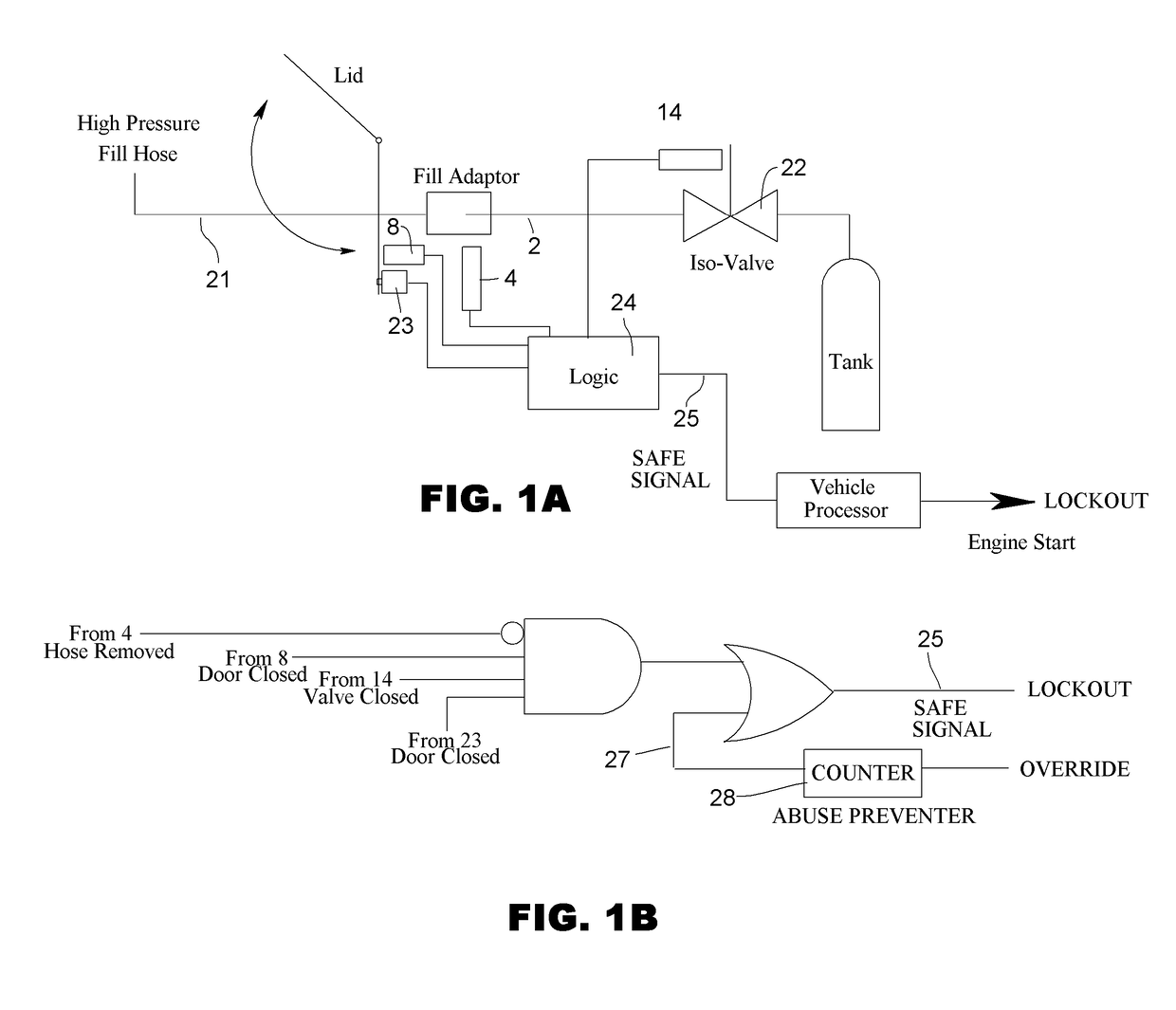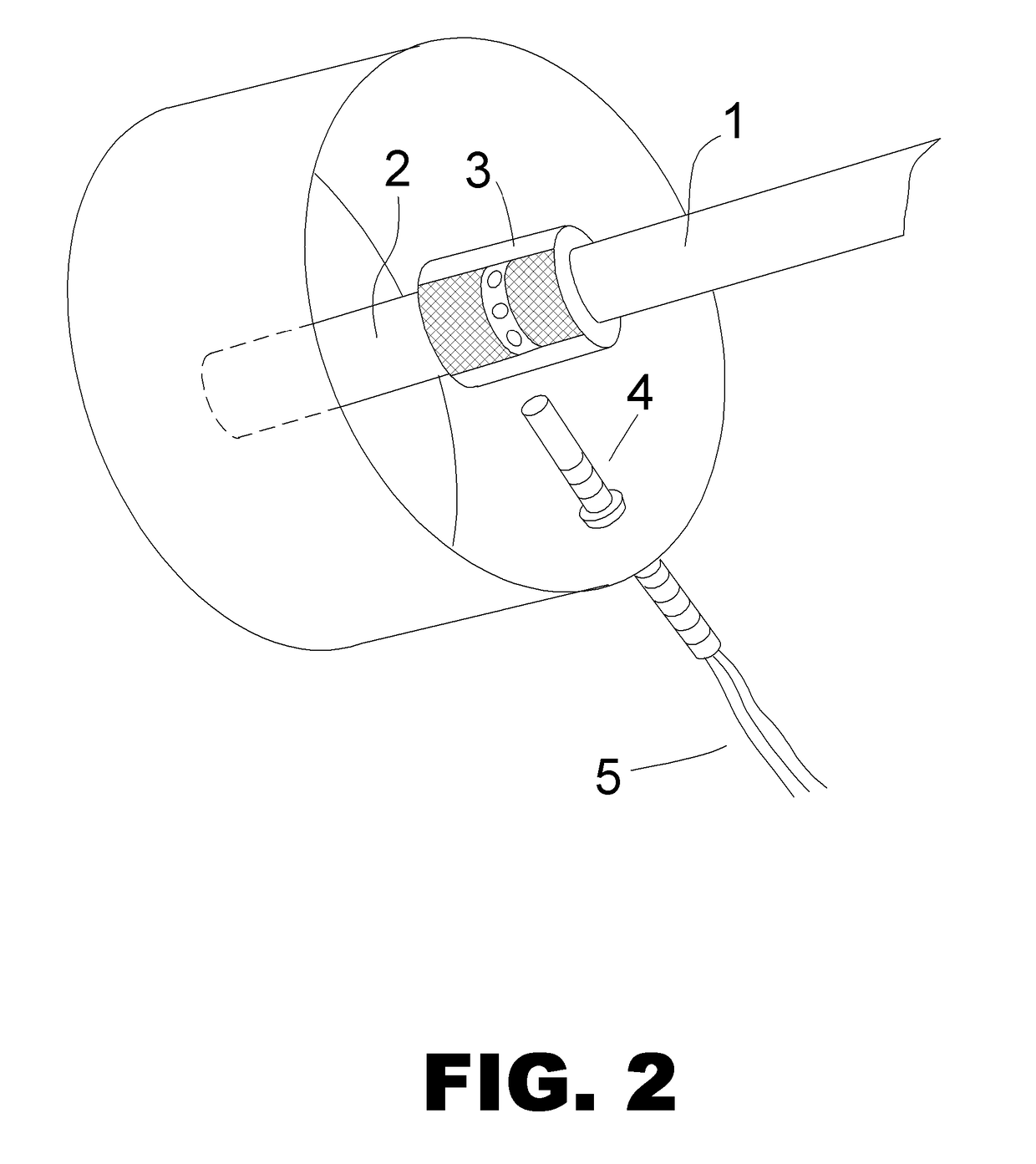Compressed Natural Gas Vehicle Safety System and Method
a technology for compressed natural gas and vehicle safety, applied in the direction of liquid transfer devices, container discharging methods, dental surgery, etc., can solve the problems of increasing the time of vehicle owner's waiting, requiring considerably more logistics and handling, and dangerous handling of liquefied gas
- Summary
- Abstract
- Description
- Claims
- Application Information
AI Technical Summary
Benefits of technology
Problems solved by technology
Method used
Image
Examples
Embodiment Construction
[0029]The present invention relates to a system and method that provides a lockout out to a vehicle's ignition, transmission or other means of moving the vehicle when a high pressure compressed natural gas fuel hose is attached to the vehicle an / or the fill cap is open. FIG. 1A shows a block diagram of an embodiment of such a system. A compressed gas fuel fitting 2 accepts a high pressure filling hose 21 that allows filling through an isolation valve 22. The isolation valve 22 can be manually opened, or it can be opened mechanically when a panel lid or “gas cap” is opened. A sensor 4, which can be an electrical proximity sensor, senses the presence of the fitting part of the high pressure filling hose 21. An optional second sensor 8 senses that the panel or gas cap is open. An optional third sensor 14 can sense the position of an isolation valve 22 (on vehicles that have such a valve). All of the sensors can be magnetic, optical or ultra-sonic proximity sensors, or any other sensors...
PUM
 Login to View More
Login to View More Abstract
Description
Claims
Application Information
 Login to View More
Login to View More - R&D
- Intellectual Property
- Life Sciences
- Materials
- Tech Scout
- Unparalleled Data Quality
- Higher Quality Content
- 60% Fewer Hallucinations
Browse by: Latest US Patents, China's latest patents, Technical Efficacy Thesaurus, Application Domain, Technology Topic, Popular Technical Reports.
© 2025 PatSnap. All rights reserved.Legal|Privacy policy|Modern Slavery Act Transparency Statement|Sitemap|About US| Contact US: help@patsnap.com



